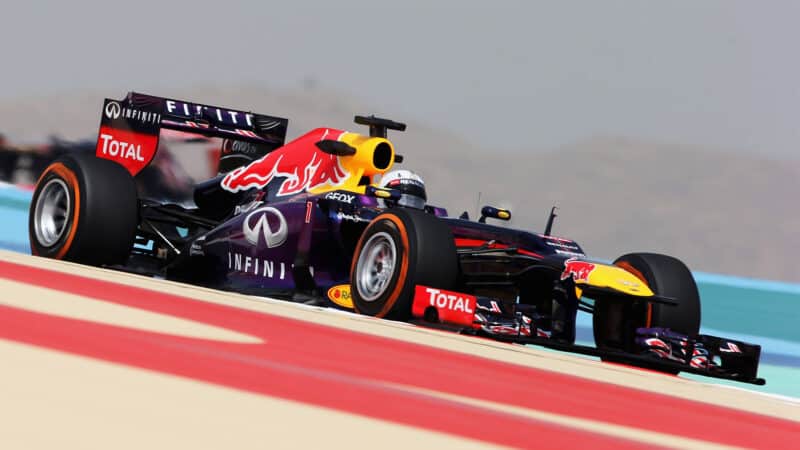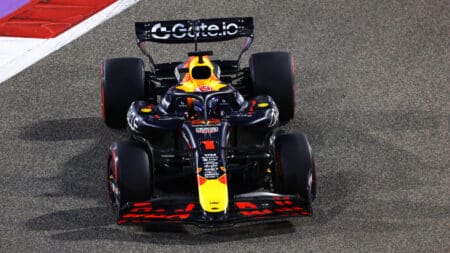The Bahrain Grand Prix, the fourth round in the 2013 series, just as it was this year, was smack bang in the middle of the delicate soft construction Pirelli phase. There were a couple of Silverstone– foreshadowing tyre blow-outs; one for Lewis Hamilton’s Mercedes in practice, two for Felipe Massa’s Ferrari in the race. They were put down to debris damage. But the false ceiling they imposed on the Red Bull was suggested by a discussion with a Pirelli engineer who said, “From the loads we are seeing the Red Bull is capable of generating, they’d be winning by a lap if we gave everyone tougher tyres.”
Adrain Newey explained further: “They were sensitive to high-load conditions so basically you couldn’t go through high-speed corners, certainly in race conditions, without destroying them. Given that our car was so good in high-speed corners it definitely helped when we went back to the 2012 tyres.”
In Bahrain, the strain is always on the rear tyres so the weaker fronts weren’t such an issue. Although Nico Rosberg pipped Vettel to pole position, Seb was in front by the third lap and proceeded to walk away from the field, winning comfortably clear of the light-on-tyres Lotuses of Kimi Räikkönen and Romain Grosjean. Rosberg’s Mercedes sunk like a stone as it overheated its rear tyres, finishing ninth, 41sec behind Vettel.

Rosberg took pole at Bahrain 2013, but Vettel was soon ahead
Grand Prix Photo
This year, the jack-in-the box has been ground effect’s final little trick as the teams have learned how to delay the bouncing threshold to be able to run incredibly low ride heights: the through-corner balance is destroyed, way too responsive on turn in, followed by mid-corner understeer as the centre of pressure aero changes are so extreme now. This new challenge only really began to become apparent in the latter stages of last season and so it’s almost as if the teams are having to master a new technology. Some have done it better than others and in the process domination has switched from Red Bull to McLaren over the last few months.
Such is F1’s complexity, the only predictable thing from one season to the next is its unpredictability.



